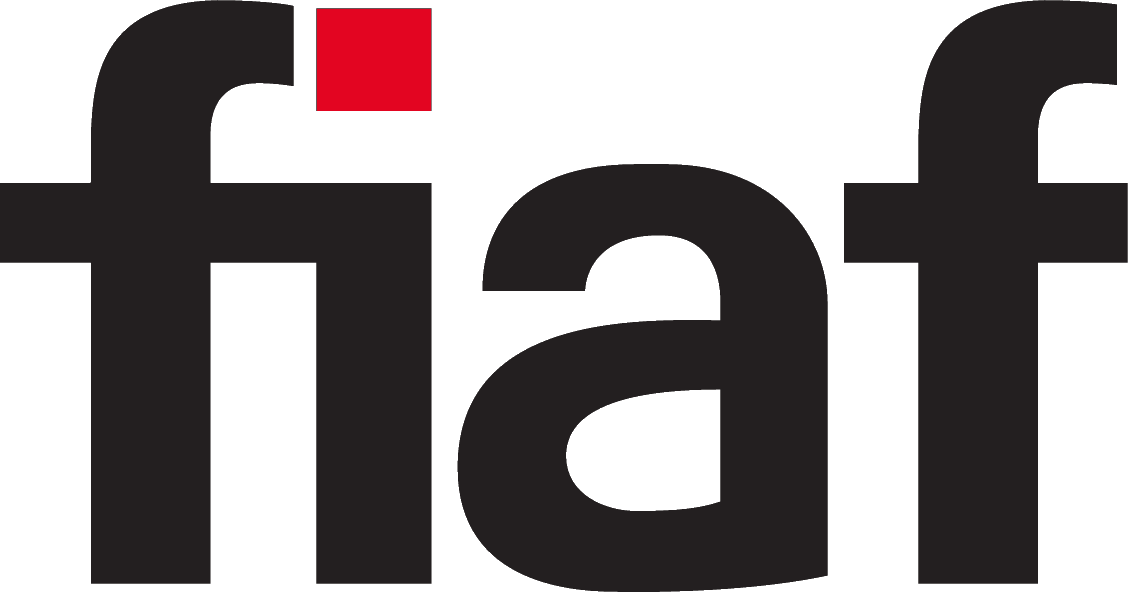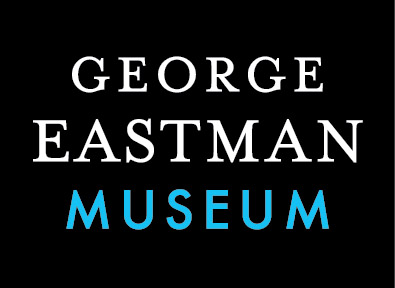A 35mm stereoscopic three-dimensional process developed by Raymond and Nigel Spottiswoode in the United Kingdom.
Film Explorer

Left- and right-eye frame scans from the 3-D Stereo Techniques Technicolor film Royal River (1951). These prints were made in 1952 at Technicolor’s British lab but come from the American release of the film, retitled Royal Flush (1953).
The Museum of Modern Art, New York, NY, United States.
Identification
Early Festival of Britain films would have been 1.37:1. Later releases may have been composed and cropped for widescreen.
B/W or color. Dye-transfer color prints were made by Technicolor Ltd. in London.Unknown
Some Technicolor prints have British Kodak edge markings.
2
Telekinema releases were in color and B/W. Color prints were either dye-transfer Technicolor, Ferraniacolor or Eastmancolor. Surviving prints made on Ferranniacolor and Eastmancolor have likely suffered extreme color fading by now.
In 1951, the four 3-D films produced for the Festival of Britain Telekinema featured a four-track magnetic stripe stereophonic soundtrack. Later prints used optical sound only.
B/W or color.
History
In 1950s Great Britain, Raymond and Nigel Spottiswoode developed and applied existing understandings of stereoscopic film technology to create short documentary-focused films before and during the 1953–55 Hollywood 3-D boom. Their subsequent company, Stereo Techniques, Ltd., utilized four different camera set-ups and rigs across its five-year production heyday. With over 20 short films and 1 feature film produced between 1951 and 1955, this system also had a limited presence in stereoscopic 3-D production in Canada and Britain through the 1970s. Never adopted by a mainstream British studio, Stereo Techniques, Ltd. relied on co-production deals with documentary and commercial producers and was ultimately overshadowed by the 1953–55 Hollywood 3-D feature-film boom.
The production of new stereoscopic 3-D short films was part of the British Film Institute’s contribution to the 1951 Festival of Britain, an event designed to replicate the Great Exhibition of 1851. As part of the Festival’s focus on British technological progress, the BFI built the Telekinema, a unique cinema complex on London’s South Bank which, alongside projecting existing film formats, would showcase large-screen television, stereophonic sound and new stereoscopic 3-D productions.
The BFI commissioned Raymond Spottiswoode to produce the 3-D films. An Oxford graduate who had worked as a reader for Metro-Goldwyn-Mayer and as the technical head of the National Film Board of Canada, Spottiswoode was lured back to Britain to create a foolproof system of stereoscopic production. He recruited his brother Nigel, an engineer and mathematician who had already experimented with 3-D photography. A collaboration with Stereoptics Ltd. Technical Director Leslie P. Dudley led to the creation of a 35mm dual-camera rig that utilized two Newman-Sinclair 35mm cameras in a face-to-face configuration. The resulting film, A Solid Explanation (1951), was a broad and comic introduction to the idea of stereoscopic film that displayed both composition in depth and the intrusion of imagery ‘into’ the audience. Stereo Techniques would continue to use and improve this Newman-Sinclair rig on films such as The Black Swan (1952) and Northern Towers (1952).
Without access to Technicolor Monopack film stock, due to delays with the Stereoptic Ltd. camera, Spottiswoode worked with Technicolor Ltd. in England to develop a second camera rig. Used only for the color short Distant Thames (1951), filming plans were revised to accommodate the stereoscopic restrictions imposed by assembling a rig with two bulky 35mm Technicolor cameras: most notably focusing wholly on long shots of the river Thames. Accordingly, the camera rig was mounted on a barge and floated down the river, capturing images of countryside and Windsor Castle. The resulting 35mm film was recut and extended as Royal River (1951): this version debuted at the Edinburgh International Film Festival in August 1951 and was subsequently shown in cinemas around Britain and at international screenings.
The final two 3-D films in the Telekinema program were animated films made by Norman McLaren at the National Film Board of Canada. The first film, Now Is The Time (To Put On Your Glasses) (1951), created its stereoscopic effects through the use of movable cut-out artwork and parallax shifts achieved through optical printing. The second film, filmed using a Bell and Howell camera, was Around is Around (1951), which created stereo imagery through the use of cel animation and images of Lissajous figures (the patterns produced by the intersection of two sinusoidal curves that are at right angles to each other) on an oscillograph. The stereo pairs for both films were optically printed at Technicolor England ahead of release (Zone, 2007).
In 1952, the Spottiswoode brothers and Charles W. Smith published their new theory of stereoscopic image production, developing and expanding the work of Professor J. T. Rule. This theoretical approach shaped the creation of the next iteration of the Stereo Techniques camera: the Space-Master. First used on the Stereo Techniques-Associated British-Pathé film of Queen Elizabeth II’s 1953 Coronation, Royal Review (1953), the Space-Master would be used on all but one of the subsequent Stereo Techniques 35mm short films and their British 3-D feature film, The Diamond Wizard (1954). The camera was later used by British cult filmmaker Pete Walker for color 3-D sequences in The Four Dimensions of Greta (1972) and a B/W 3-D flashback in The Flesh and Blood Show (1973).
The experience of building the Space-Master also informed the design and creation of a camera that was designed for 3-D filming, not built from pre-existing components. This camera, funded by the National Research Development Corporation (NRDC), was used on one Stereo Techniques short film, Power in Perspective (1955). The end of the 3-D boom meant the NRDC camera would be used for 3-D sequences in early 1960s Canadian horror film The Mask, before being donated to the London Science Museum (Smith, 1974; Smith, 1998).
The influence of the Telekinema’s 3-D process was not restricted to the films. Stereo Techniques helped establish a small UK and European 3-D network for its films, with three varied packages of 3-D films (including advertisements, ballet, cartoons, documentaries, newsreel, sports, and travelogue) being exhibited in major cities and towns across the UK and Europe (including Belgium, France, Germany, the Netherlands and Switzerland). The four Stereo Techniques’ Telekinema films were also reedited and repackaged by American producer Sol Lesser – with the inclusion of ballet film The Black Swan – under various titles. Initially called Tri-Opticon (for a December 1952 Chicago premiere), then Stereo Techniques’ 3-Dimension (from February 1953; and after an objection from Spottiswoode’s lawyers), Lesser eventually settled on Royal Flush (1953) for a limited roadshow run in the United States including screenings in Cleveland and New York.
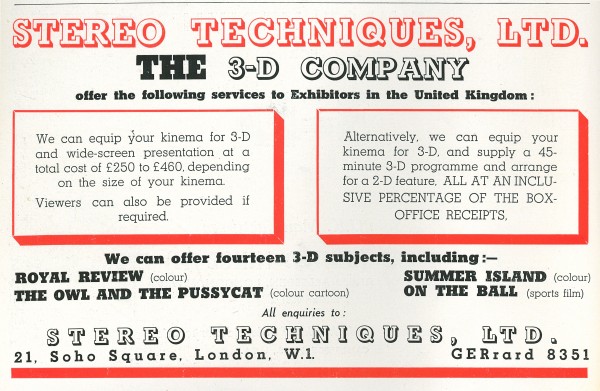
Stereo Techniques, Ltd. advertisement promoting the company’s films and exhibition expertise.
Stereo Techniques, Ltd. (1953). Kinematograph Weekly , 83278 (October 1): p. 30.
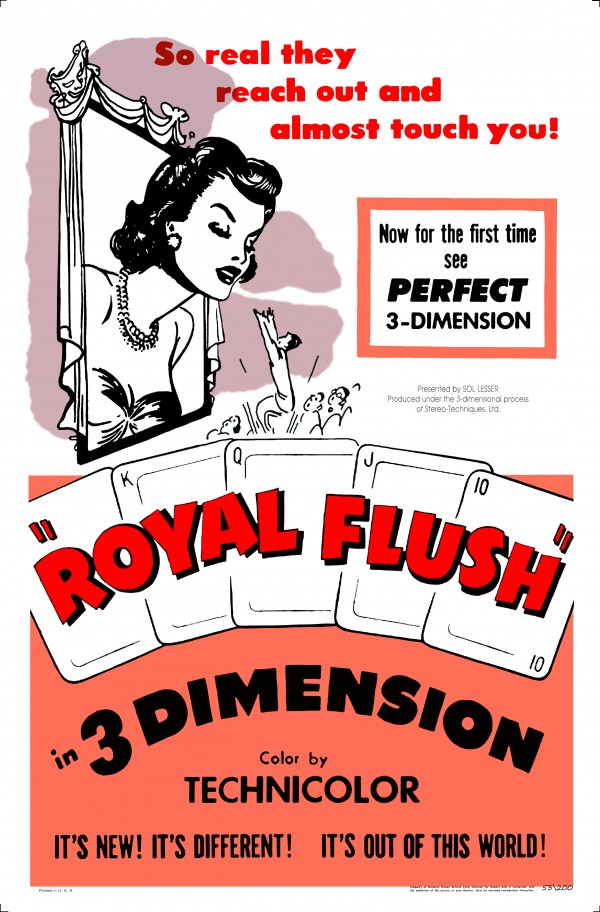
Between 1952 and 1954, Sol Lesser distributed the early Stereo Techniques films in a compilation called Stereo Techniques’ 3 Dimension and, later, Royal Flush.
3-D Film Archive, Clifton, NJ, United States.
Selected Filmography
Short color animated film featuring abstract images. Stereophonic sound. Produced and screened at the Festival of Britain Telekinema.
Short color animated film featuring abstract images. Stereophonic sound. Produced and screened at the Festival of Britain Telekinema.
Short B/W film featuring ballet dancer Beryl Gray performing an excerpt from Swan Lake.
Short B/W film featuring ballet dancer Beryl Gray performing an excerpt from Swan Lake.
Feature-length B/W gangster thriller shot in 3-D but released in a ‘flat’ 2-D version.
Feature-length B/W gangster thriller shot in 3-D but released in a ‘flat’ 2-D version.
Short color film capturing landscape on and around the river Thames. Distant Thames was produced and screened at the Festival of Britain Telekinema. Royal River is the extended version of the earlier film, first screened at the 1951 Edinburgh International Film Festival.
Short color film capturing landscape on and around the river Thames. Distant Thames was produced and screened at the Festival of Britain Telekinema. Royal River is the extended version of the earlier film, first screened at the 1951 Edinburgh International Film Festival.
Short B/W film focused on different ball games, including football (soccer), tennis, badminton and snooker.
Short B/W film focused on different ball games, including football (soccer), tennis, badminton and snooker.
Short color animated film featuring animation drawn directly onto 35mm film. Stereophonic sound. Produced and screened at the Festival of Britain Telekinema.
Short color animated film featuring animation drawn directly onto 35mm film. Stereophonic sound. Produced and screened at the Festival of Britain Telekinema.
Short B/W documentary about Chester oil refinery.
Short B/W documentary about Chester oil refinery.
Short color documentary about prime movers – machines that convert energy into work.
Short color documentary about prime movers – machines that convert energy into work.
Short Ferraniacolor advertising film for Capstan Cigarettes, shown in front of UK screenings of Bwana Devil (1953).
Short Ferraniacolor advertising film for Capstan Cigarettes, shown in front of UK screenings of Bwana Devil (1953).
Short Eastmancolor documentary about the coronation of Queen Elizabeth II, including events in London and Scotland.
Short Eastmancolor documentary about the coronation of Queen Elizabeth II, including events in London and Scotland.
Short B/W film explaining stereoscopy. Produced and screened at the Festival of Britain Telekinema.
Short B/W film explaining stereoscopy. Produced and screened at the Festival of Britain Telekinema.
Short Ferraniacolor promotional film about the island of Madeira, sponsored by Madeira Wines Ltd.
Short Ferraniacolor promotional film about the island of Madeira, sponsored by Madeira Wines Ltd.
Short B/W documentary about the creation of a new open-cast coal mine.
Short B/W documentary about the creation of a new open-cast coal mine.
Color documentary-drama about Hank (Desmond Montgomery), an American stationed in England, who investigates a rally organized by the Vintage Car Club.
Color documentary-drama about Hank (Desmond Montgomery), an American stationed in England, who investigates a rally organized by the Vintage Car Club.
Technology
The development of the various camera set-ups used by Stereo Techniques Ltd. represent the best technological approaches to stereoscopic 3-D available in the 1950s, as well as the company’s clear desire to create and innovate within 3-D filmmaking.
The camera rig built for the Telekinema films was based on designs from Raymond and Nigel Spottiswoode alongside Lesley P. Dudley, the owner of Stereoptics, Ltd. It used two Newman-Sinclair 35mm cameras mounted face-to-face on a baseplate with mirrors fixed at 45 degrees to each lens. The camera achieved a variable stereo base between 1 and 8 inches (2.5cm to 20.3cm) – the stereo base being the distance between the two lenses – and a high stereo angle from 0 through 5 degrees, the angle of convergence allowing the operator to control where filmed objects would appear on the screen (Zone, 2007). Improved by Stereo Techniques staff after the production of A Solid Explanation, this 3-D rig was used for 35mm filming in B/W and both Ferrianacolor and Eastmancolor, allowing the film to be processed via standard methods. Film shot with this rig required “optical printing to correct the image reversal caused by photographing through mirrors” (Smith, 1987), as well as imprecise alignment, but such optical work was standard with this approach to stereoscopic filmmaking (albeit an issue that clearly irked Raymond Spottiswoode).
The second Telekinema camera rig was specially built by Technicolor Ltd. in England using two of their existing three-strip cameras. Due to the size of the cameras, when two were mounted side-by-side it created a different stereo base (9.5 in [24.13cm]) to the Newman-Sinclair rig. This restricted the material that could be filmed to long shots and, despite the strong pictorial results, this rig was not used again for future Stereo Techniques films. Their next color film, Summer Island, was shot with the Newman-Sinclair rig using Ferraniacolor 35mm, which could be processed at UK laboratories from 1952 onwards.
The third camera rig was the Space-Master, manufactured by the California-based Richardson Camera Company to a Stereo Techniques design. This rig utilized a special set-up of two lightweight Éclair Caméflex 35mm cameras, adapted to fit the needs of stereoscopic filming and to reduce the need for optical printing for image correction. Charles W. Smith from Stereo Techniques travelled to California to oversee its manufacture:
Lee Richardson had undertaken to produce a new type of lens mount which incorporated the dual movements required for 3-D: a cross-over movement for convergence in addition to the usual in-out movement for focusing. In addition, a right-angle mirror of minimum size to cover the lens angle was to be incorporated into each mount: “The Caméflex camera bodies had to be trepanned to permit the passage of these reflected views (this requirement had made Arriflexes unusable, because of the Arri side-mounted mirror)” (Smith, 1987: p. 29).
The Space-Master was designed to use three pairs of Kinoptik f/2 lenses with varied focal lengths (32mm, 40mm, 50mm), with plans to incorporate a 70 or 75mm lens. This was also the first (and only) Stereo Techniques 3-D rig to be encased in a sound-proof blimp, made from fiberglass to enable better live synchronous sound recording.
The fourth and final rig was called the National Research Development Corporation (NRDC) camera. It was built by W. Vinten Ltd. to a Spottiswoode brothers’ design – and described as “an integral camera designed from the start for 3-D production … not merely an assembly of two existing cameras” (Smith, 1987). This camera contained seven pairs of lenses and allowed for an adjustable interaxial separation from 0 to 5 inches (12.7cm) with “convergence applied by axial offset of the gate (repeatable to 0.0004 inches)” (Smith, 1987). These adjustments allowed for free operation during the filming of a scene including shots featuring a moving camera.
Stereo Techniques was also instrumental in helping exhibitors install the necessary equipment to achieve effective stereoscopic projection for their packages of films. The purpose-built 1951 Telekinema site featured two state-of-the-art British Thomson-Houston Ltd. (B.T.H.) SUPA [Single User Projection Assembly] projectors. These were fitted with Polaroid filters, coupled together with an independent Selsyn motor to ensure synchronization, and linked to an EMI scanning unit for the four-track stereophonic sound. As with almost all stereoscopic 3-D systems, audience members were required to wear polaroid glasses in order for the 3-D effect to be created. Stereo Techniques would follow a similar approach in existing cinema sites that wanted to screen their 3-D short film packages: “the mechanical synchronization of the two projectors which then stood in every projection-box; the temporary installation of an aluminized screen; and careful training of the projectionists in the new skills” (Smith, 1987).
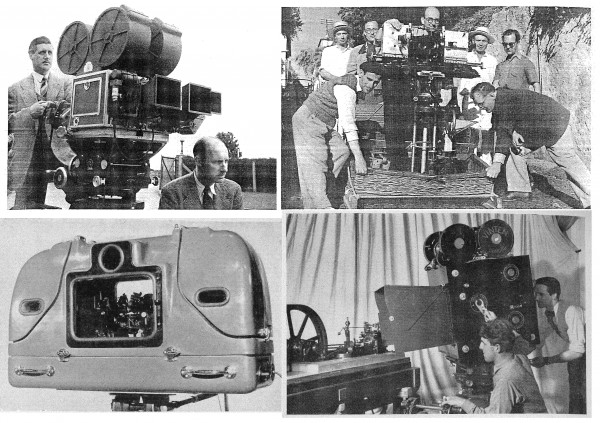
Top left: The 2-camera Technicolor rig built for Distant Thames / Royal River (1951).
Top right: The Newman-Sinclair rig on location in Madeira for Summer Island (1953).
Bottom left: The Spacemaster camera inside its sound-proof blimp casing.
Bottom right: The NRDS camera at the British Science Museum during filming of Power in Perspective (1955).
Anon. (1951). Eyepiece (Jan-Feb 1987): p. 27. / Charles W. Smith. (1952). Eyepiece (Jan-Feb 1987): p. 26. / Anon. (1953). Kinematograph Weekly (September 3): p. 28. / Charles W. Smith. (1954). Eyepiece (Jan-Feb 1987): p. 29.
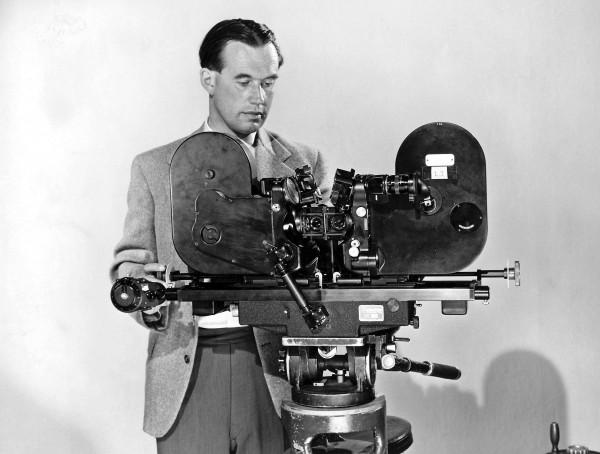
Raymond Spottiswoode and the Spacemaster camera with its soundproof blimp removed.
3-D Film Archive, Clifton, NJ, United States.
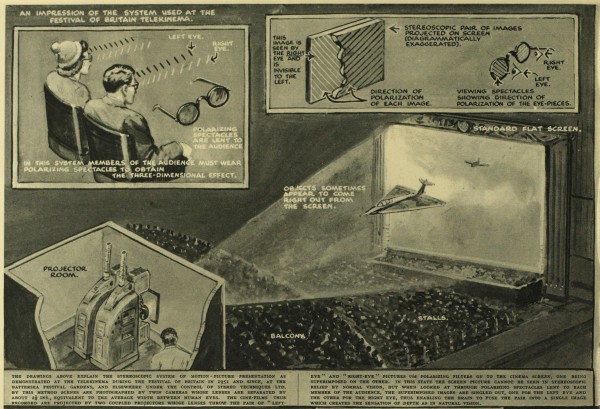
A retrospective explanation of the Telekinema projection set-up and the stereoscopic effect it hoped to create.
Anon. (1953). London Illustrated News (March 7): p. 354.
References
Smith, Charles W. (1974a). ‘Three dimensional films – the past and the future: Part 1’. The BKSTS Journal (September): pp. 222–228.
Smith, Charles W. (1974b). ‘Three dimensional films – the past and the future: Part 2’. The BKSTS Journal (October): pp. 270–274.
Smith, Charles W. (1987). ‘3-D. The British foundations’. Eyepiece: Journal of the Guild of British Camera Technicians, 8:1 (January/February): pp. 26–30.
Smith, Charles W. (1998). ‘A Forgotten 3-D Camera’. Image Technology, 80:4 (April): pp. 18-20.
Spottiswoode, Raymond, Spottiswoode, Nigel & Smith, Charles W. (1952). ‘Basic Principles of the Three-Dimensional Film’. Journal of the Society of Motion Picture Engineers, 59:4 (October): pp. 249–286.
Spottiswoode, Raymond & Spottiswoode, Nigel (1953). The Theory of Stereoscopic Transmission. Berkeley: University of California Press.
Zone, Ray (2004). ‘A window on space: dual-band cameras of the 1950s’. Film History, 16: pp. 216–228.
Zone, Ray (2007). Stereoscopic Cinema and the Origins of 3-D Film, 1838-1952. Lexington: University of Kentucky Press.
Compare
Related entries
Author
Keith M. Johnston is Professor of Film & Television Studies at the University of East Anglia. His research covers the history of different film and media technologies in American and British cinema, including colour film, stereoscopic 3D, and special effects, as well as the development of film marketing and promotion. He is the author of Coming Soon: Film Trailers and the Selling of Hollywood Technology (McFarland & Co, 2009), Science Fiction Film: A Critical Introduction (Berg, 2011), and co-author of Colour Films in Britain: The Eastmancolor Revolution (Bloomsbury, 2022).
My thanks to the British Academy for funding the initial research on British 3-D filmmaking including the information on Stereo Techniques, Ltd. and its films contained here. Thanks also to Bob Furmanek and Mike Ballew for their support and discussion of 1950s British 3-D and the role of Raymond Spottiswoode.
Johnston, Keith M. (2024). “Stereo Techniques 3-D”. In James Layton (ed.), Film Atlas. www.filmatlas.com. Brussels: International Federation of Film Archives / Rochester, NY: George Eastman Museum.
